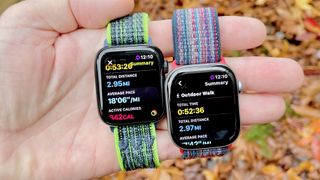Wellness
Explore Wellness
Latest about Wellness

5 strength exercises for your upper body that don't involve lifting heavy weights
By Sam Hopes last updated
You can still build a strong and mobile upper body without lifting heavy weights, and this is exactly how with five bodyweight exercises.

I tested 19 running watches in 2025 — these are the 2 that I'd actually buy
By Nick Harris-Fry published
A lot of great sports watches were launched in 2025, but there are two top options that I’d have on my shortlist if I were looking to buy one right now.

Dermatologists reveal the gross reason why you should wash your new Christmas pajamas before wearing them — especially if you have this condition
By Frances Daniels published
Thinking of wearing your brand new Christmas pajamas without washing them first? Skin experts are urging you to think again for this health reason

This popular Christmas pajama set is a big no-no for this type of sleeper
By Ruth Jones published
You might end up sweating around the Christmas tree if you wrap your self up in flannel and fleece pajamas this festive season.

Can't sleep? The 'relaxing' habit that kept me awake and how I got my sleep back on track
By Ruth Jones published
I thought de-stress games would help me wind-down before bed but gamifying relaxation just kept me awake.

Adidas sale is live from $12 at Amazon — final hours for holiday delivery
By Millie Davis-Williams last updated
Amazon is offering a bunch of Adidas deals for the holidays — it's your last chance to get holiday delivery, so act fast.

I walked 5,500 steps with the Apple Watch 11 vs Apple Watch SE 3 — And the results are surprising
By Dan Bracaglia last updated
Is the Apple Watch 11 or the Apple Watch SE 3 a better fitness tracker? I wore one on either wrist and sauntered about to find out.

The sleep survival kit that helped me stay refreshed and alert for (most of) 2025
By Eve Davies published
The products I've actually relied on for better sleep this year, out of the 45 I've tested.
Here at Tom’s Guide our expert editors are committed to bringing you the best news, reviews and guides to help you stay informed and ahead of the curve!


